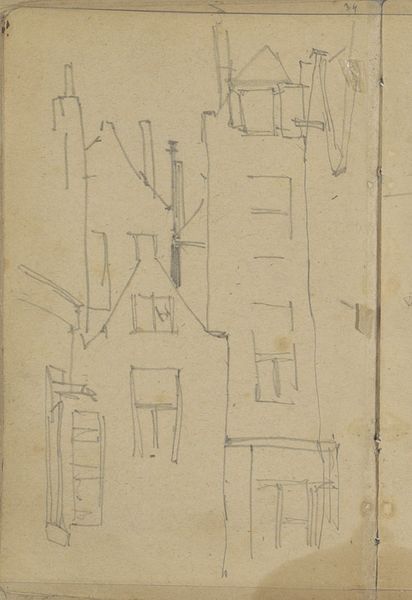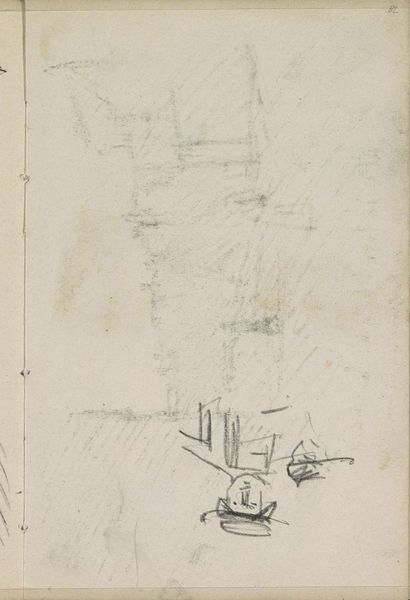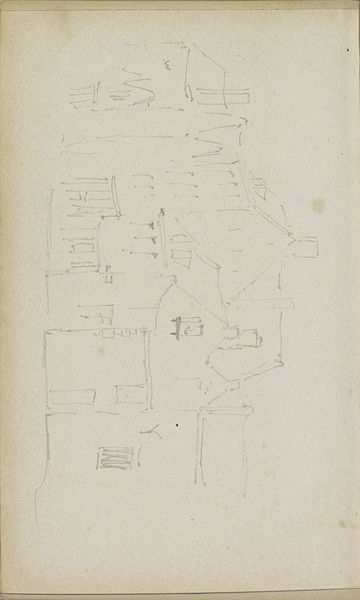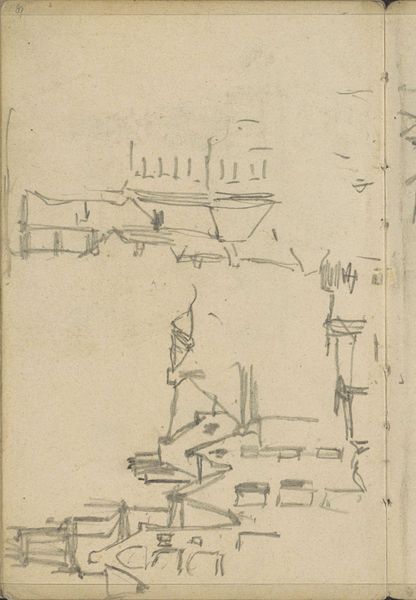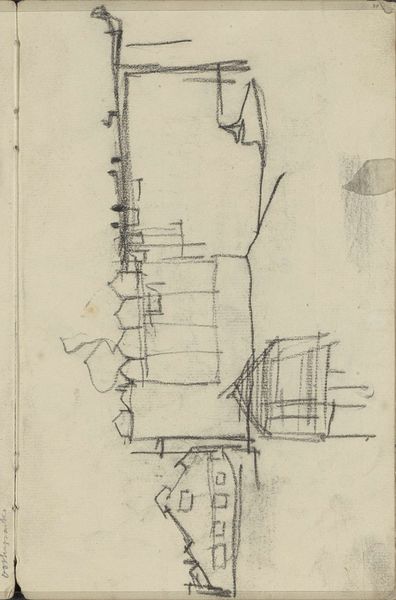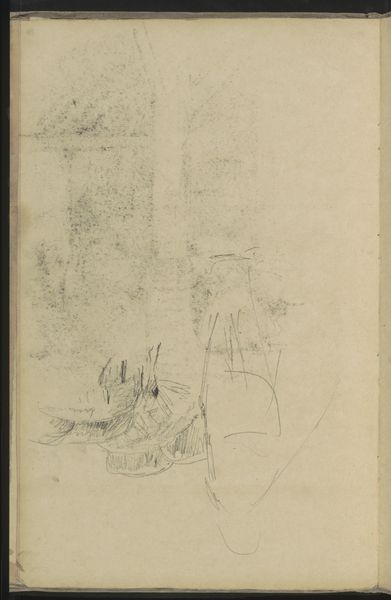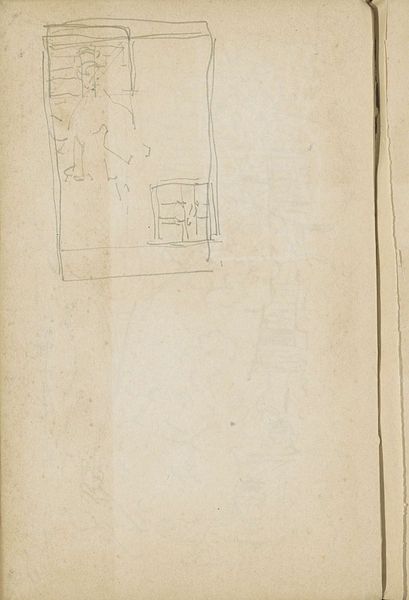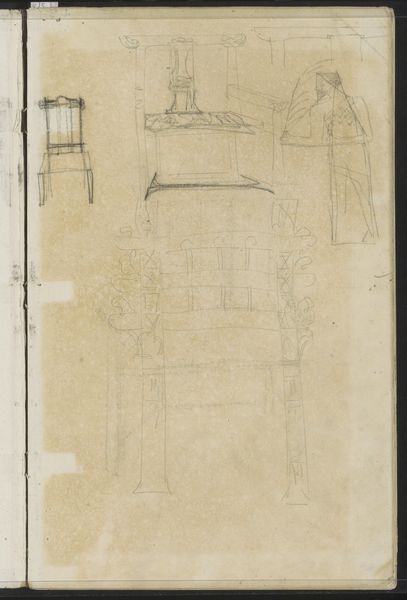
drawing, paper, pencil
#
drawing
#
aged paper
#
toned paper
#
light pencil work
#
quirky sketch
#
arts-&-crafts-movement
#
sketch book
#
paper
#
form
#
personal sketchbook
#
idea generation sketch
#
geometric
#
pencil
#
line
#
sketchbook drawing
#
sketchbook art
#
initial sketch
Copyright: Rijks Museum: Open Domain
Editor: This is "Ontwerpen voor een leunstoel," or "Designs for an Armchair," a pencil drawing on paper by Carel Adolph Lion Cachet, around 1906, currently at the Rijksmuseum. It feels very preliminary, almost like peeking into the artist’s thought process. What catches your eye about its composition? Curator: The dynamism inherent in the sketches speaks volumes. Observe the rigorous, almost mathematical approach to the geometric structure of the chair. The lines, while seemingly casual, betray a deep engagement with form and function. How do you interpret the artist's use of line in defining the chair's structure? Editor: I notice the lines are very light and freehand. Is this a typical style for furniture design drawings? Curator: Not necessarily. What interests me is the seemingly spontaneous quality combined with a clear intention to explore spatial relationships and proportions. Notice how the varying line weights create depth and hierarchy within the design. Consider also the tonal qualities of the paper, how its aged appearance adds a layer of historical context to our reading of the work’s form. What, to you, does this suggest about the role of materiality in understanding artistic intention? Editor: It gives a sense of time passing, almost like finding a lost artifact, providing insight into Cachet's creative choices. Curator: Precisely. And these formal decisions allow us, as viewers, entry to the piece. I appreciate the candid look into the design. Editor: I hadn't considered that. Thank you for this close analysis; it's a lot more than just a sketch!
Comments
No comments
Be the first to comment and join the conversation on the ultimate creative platform.

